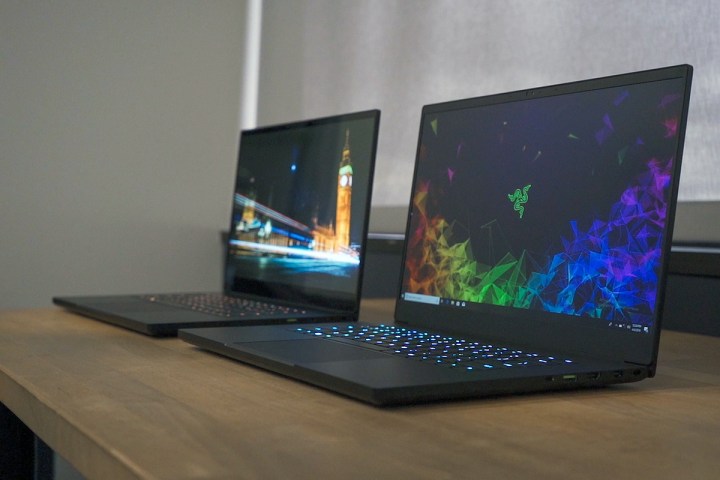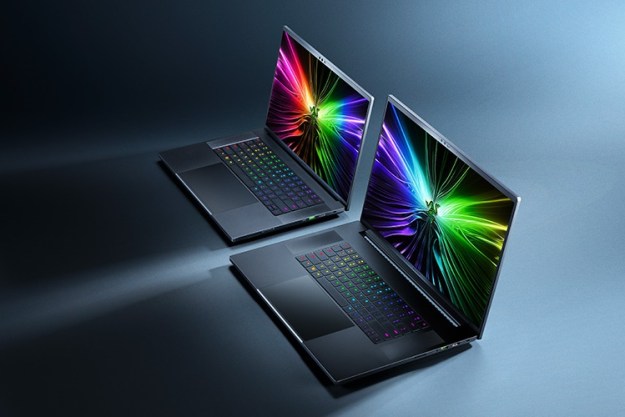Razer announced new additions to its high-end gaming laptop lineup, including one with a 4K OLED screen and another with a 240Hz refresh rate. This is the second update for these “Advanced Model” Razer Blades in this year alone, the first coming at CES 2019 with RTX graphics. This time around, the focus is twofold: New display technologies and Intel’s new 9th-gen six-core processors.
First up is the OLED panel. OLED is making a comeback in
Like many 4K
The other option for advanced panel technology is about speed, not fidelity. A 240Hz refresh rate option replaces the 144Hz in the Advanced Models, allowing for smooth gameplay at extremely high framerates. Are these systems really powerful enough to push over 200 frames per second? Maybe in certain games with graphics settings turned down. When asked why anyone would need a refresh rate this high, Razer representative simply said, “Why not?” Fair enough, especially since Razer doesn’t appear to be charging extra for this version, still with a starting price of $2,399.

The same cannot be said about the OLED model, though. At $3,299, it’s currently the most expensive Razer laptop, even topping the new 17-inch Razer Blade Pro. It only goes up from there if you want to upgrade to from the RTX 2070 Max-Q up to an RTX 2080 Max-Q GPU or add more storage. All Advanced Model options also come with Intel’s 9th-gen Core i7-9750H processor, 16GB of RAM, and up to 512GB of SSD storage. These new processors are still six cores and twelve threads, offering a marginal increase in clock speed and Wi-Fi 6 capability.
These two new Razer Blades take the place of the previous Advanced Model, which included displays options for either a 1080p 144Hz screen or a
Confused yet? Well, Razer also introduced a new version of its more affordable Base Model, which is a 1080p 144Hz screen with the RTX 2060 graphics that starts at $1,999. It comes with 16GB of
We don’t have a firm release date yet on these three new Razer Blades (or the new Razer Blade Pro), but Razer says they’ll be available at some point in May.
Editors' Recommendations
- I tested the three best 14-inch gaming laptops. There’s a clear winner
- 4 gaming monitors you should buy instead of the Alienware 34 QD-OLED
- A comprehensive guide to buying a gaming laptop in 2024
- I sat in Razer’s new gaming chair, and my back loved it
- LG’s new OLED monitor does 4K — and so much more


